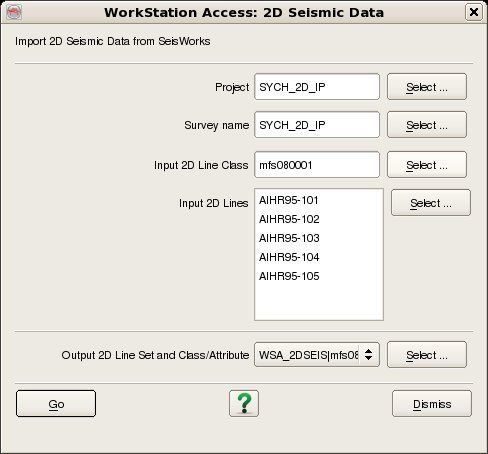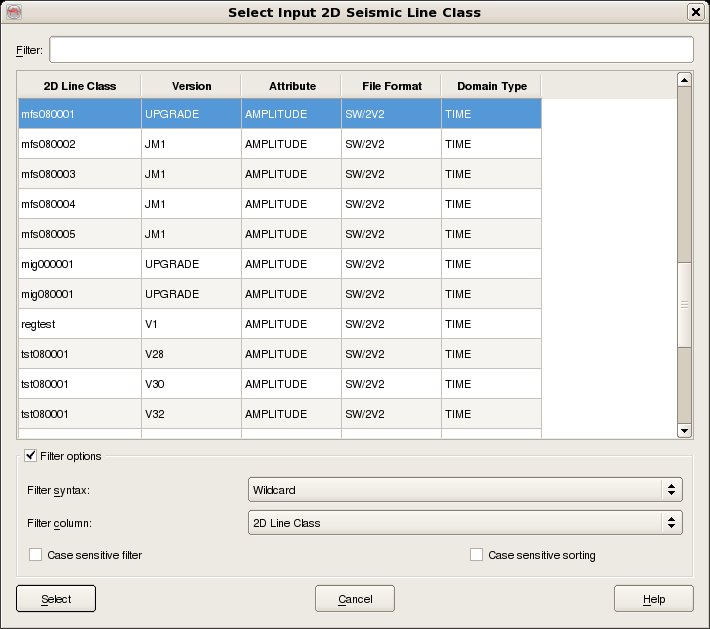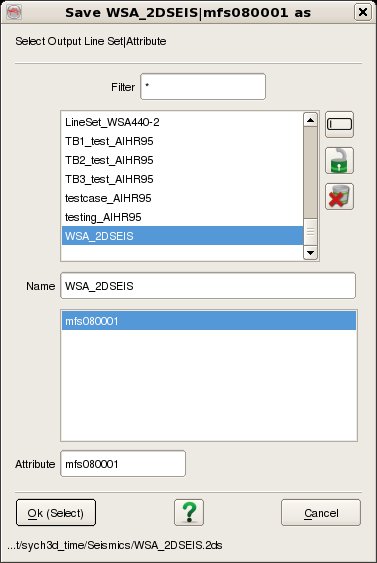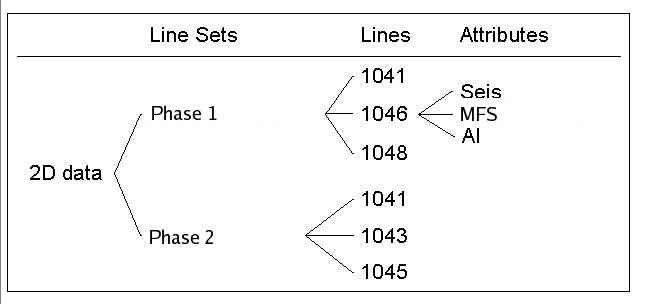To import 2D seismic data, select Survey - Import - SeisWorks - 2D. The top part of the user interface corresponds to the SeisWorks access, where it is needed to specify the SeisWorks Project, Survey name and select the Input Line Class and Input Lines that you wish to import (For multiple selection of lines hold the Ctrl key while selecting).
The bottom part of the user interface corresponds to the OpendTect access, where you need to specify the Output Line Set and Attribute. This is a composite name comprising the Line Set name and Attribute name (which corresponds to the Line Class). Each of the selected Input Lines will be imported, one at a time, and added to the Output Line Set. See Line Set and Attribute selection dialog for details of selecting / creating the Output Line Set and Attribute, and see OpendTect 2D Data Organisation for details on how 2D data is stored by OpendTect. See Input Input Seismic Line Class Selection dialog for details on selecting the Line Class.

A Line Class is selected by two data keys, Name and Version. The data selection dialog also displays the Attribute, File Format and Domain Type for information only. To filter the list enter the required Filter into the text field at the top. It is possible to filter on any of the four available columns by changing the Filter Column to whichever is desired. The default Filter syntax is Wildcard which means that the list is automatically filtered to only list items who's Filter Column includes the string entered into the Filter field. Other Filter syntaxes supported are Fixed Field and Regular expression. Case sensitive filtering and Case sensitive sorting are also optionally supported.

This dialog allows the selection of the a Line Set and Attribute. Line Sets can be selected from the list or a new name can be entered for creation. Likewise Attributes can be selected from the list or entered for creation.

2D data is stored in individual lines, and sets of individual lines can be grouped into Line Sets. When an individual line is loaded it always has to go into a Line Set, either a new one or an existing one. Also, each 2D line can contain multiple data called Attributes. For example, Seismic data, acoustic impedance data, or any other attribute like similarity or frequency. Usually, when staring up a project, only seismic data is available. But during a project, multiple data is created, and one has to organize data properly into attributes, Lines and Line Sets. The data hierarchy is graphically displayed below.
